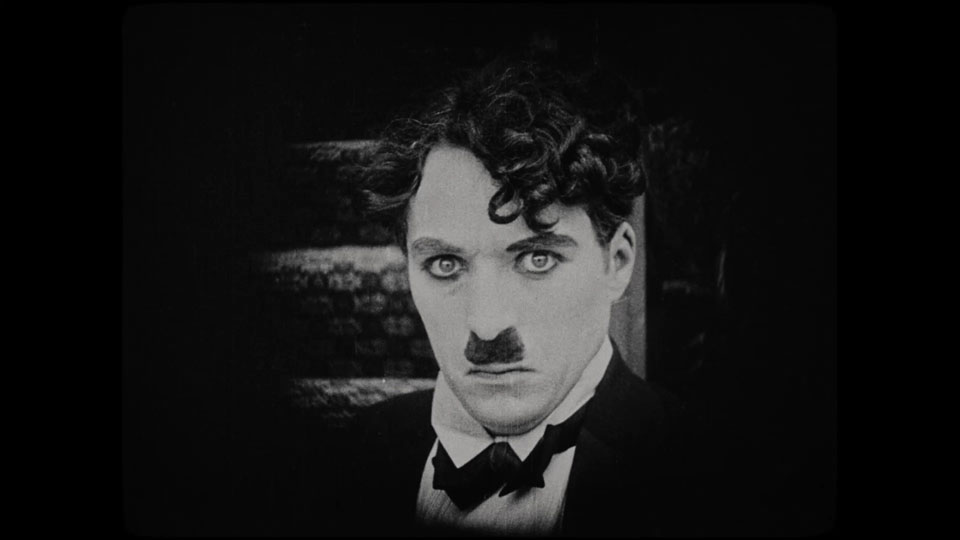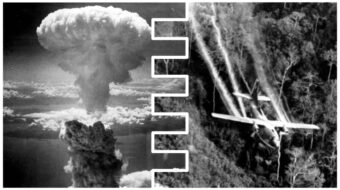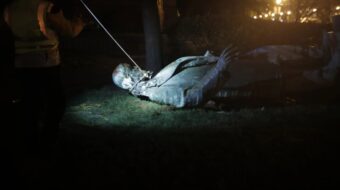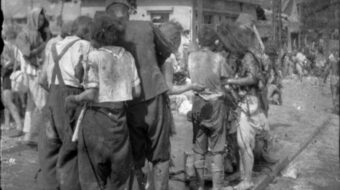
LOS ANGELES—My favorite film at AFI this year was The Real Charlie Chaplin, co-directed by Peter Middleton and James Spinney, who co-wrote the almost 2-hour biopic with Oliver Kindeberg. The highest compliment I can pay this documentary that traces the rise and fall and rise of the eponymous screen comic is that it is worthy of its subject who, of course, was one of motion pictures’ great pioneers.
Chaplin’s rags to riches saga is told in a highly cinematic way, using never-before-heard-in-public rare recordings, clips from Chaplin’s classics such as 1921’s The Kid, 1931’s City Lights, and 1940s The Great Dictator, special effects, archival footage, home movies, reenactments, and interviews with intimates, including several of the children Charlie had with his fourth and final wife, Oona O’Neill, plus some interviews that The Hollywood Reporter reports are staged.
The film delves into the private life of what was at the time the most famous man in the world, including his penchant for youthful females. A couple of Chaplin’s ex-wives have excoriating comments.
The film also sheds new light on the politics of this champion of the underdog, which caused Chaplin’s downfall in Hollywood during the Blacklist/McCarthy era. Chaplin is heard making eye-popping (or “ear-popping”) comments about communism that I’d never been aware of before. The Tramp’s advocacy for the poor—after all, Charlie’s alter ego was a homeless hobo, and Chaplin suffered much during his impoverished childhood in London—plus purported scandals forced the English-born superstar into exile. He became the Red Scare’s most high-profile Hollywood exile, and landed, in style and with aplomb, at a wonderful estate in Vevey overlooking Lake Geneva, in the French-speaking portion of neutral Switzerland.
As Real shows, the aging Englishman lived out his days there in a sort of splendid isolation, but with the patriarch surrounded by his many children and Oona, who is always depicted, as here, as a loving wife and mother. For some strange reason Real never bothers to mention that Oona’s father just happened to be Eugene O’Neill, who had as much impact on theater as Charlie did on cinema. The documentary also never specifically states that the posh Swiss chateau the Chaplins lived in for about a quarter-century has been converted into a stellar movie museum, possibly the world’s best reliquary of vintage filmdom.
After relocating to Switzerland around 1951, the brilliant auteur only wrote/directed/produced and acted in two more films, which are given short shrift in Real. However, Chaplin’s 1958 A King in New York was in its day the only English-language film to have explicitly, directly taken on the Hollywood Blacklist and House Un-American Activities Committee. I don’t believe Real even mentions Chaplin’s cinematic swan song, 1967’s A Countess from Hong Kong, starring Marlon Brando and Sophia Loren (with Charlie in a droll cameo), which is likewise overlooked by most movie historians. This film historian, however, believes critics and fans shouldn’t count Countess out and should give it a second look.
Be that as it may, there are extended clips from other Chaplin masterpieces, and Real provides some fresh insight during its cinematic stroll down movie memory lane. For instance, according to the documentary. the attic set in The Kid where the Tramp is forcibly separated by the authorities from his adopted abandoned son (played by little Jackie Coogan, who grew up to portray Uncle Fester on the 1960s TV series The Addams Family) was designed by Charlie to replicate the space he grew up in poverty, watching his mother progressively deteriorate. Another behind-the-scenes peek provided by Real is how Chaplin creatively struggled to film a key scene in City Lights.
But Chaplin’s antifascist tour-de-force The Great Dictator is given pride of place and his rabblerousing speech as a Jew mistaken for Hitler—arguably the cinema’s best political oration in the English language—is heard, and still mustered some applause from the AFI (or should I say Antifa?) audience.
I love and highly recommend The Real Charlie Chaplin, which provides a penetrating portrait of one of the geniuses who coinvented and shaped the silver screen. This documentary is a must-see for Chaplin fans and lovers of film history and will play on Showtime. For more info see The Real Charlie Chaplin.
For more information see AFI FEST.










